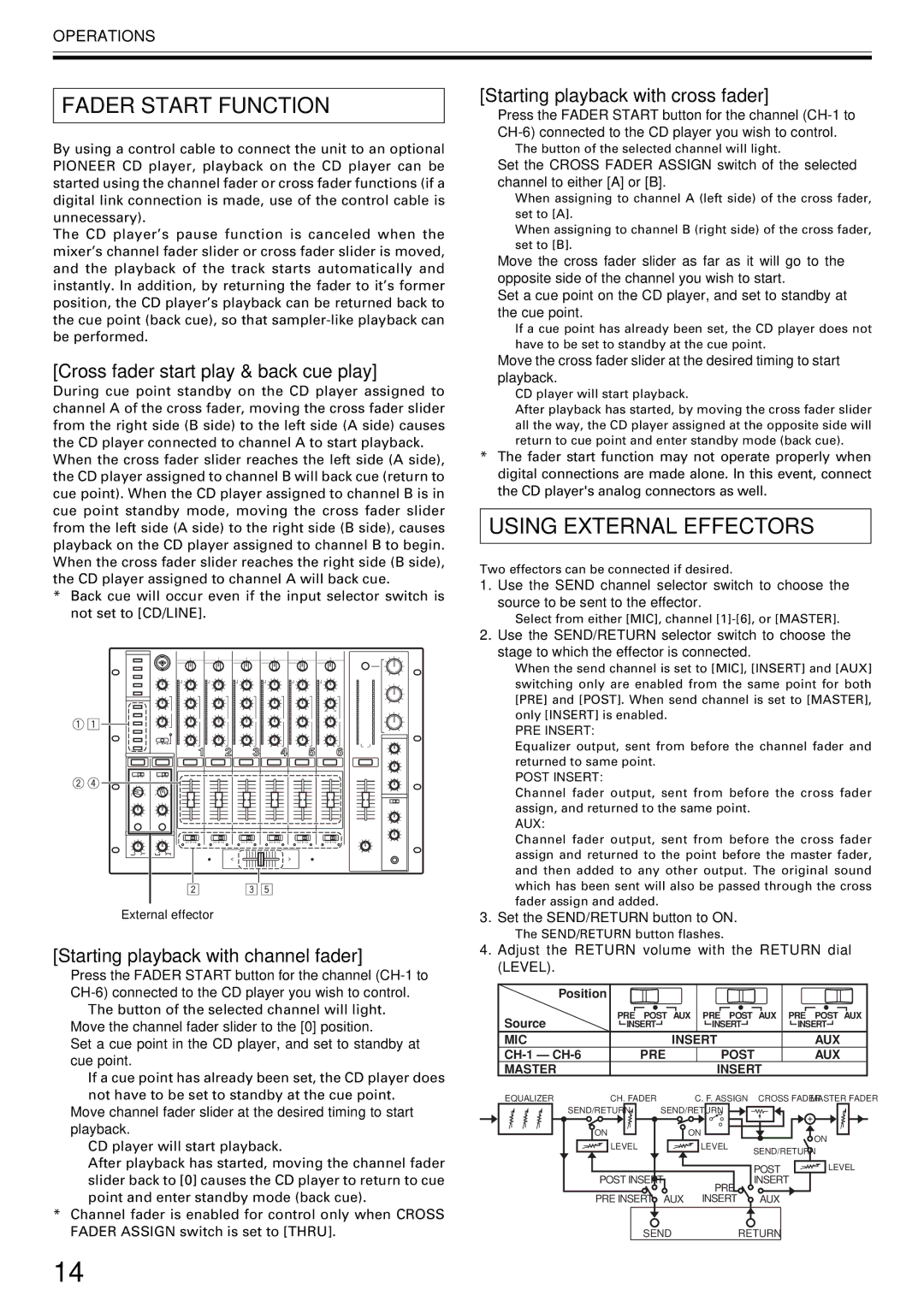DJM-1000 specifications
The Pioneer DJM-1000 is a professional-grade DJ mixer that has become a staple in clubs and at festivals around the world. Renowned for its sound quality and intuitive design, the DJM-1000 enables DJs to deliver seamless sets and creative mixes. This four-channel mixer incorporates an array of features that cater to both amateur and professional DJs alike.One of the main highlights of the DJM-1000 is its advanced digital processing technology, which provides exceptional audio quality with low distortion. The mixer boasts a high-performance 96 kHz/24-bit sound card, ensuring that every nuance of the track comes through with crystal clarity. Furthermore, it features a broad frequency response, making it well-suited for various genres of music.
The DJM-1000 is equipped with a comprehensive set of effects processors, including a range of built-in effects such as echos, flangers, and filters. The intuitive layout allows for real-time effect manipulation, enabling DJs to add flair and creativity to their mixes. The Beat Effects feature synchronizes effects to the tempo of the music, providing a seamless integration that enhances the overall mix.
Another key characteristic of the DJM-1000 is its easy-to-use interface. The layout focuses on usability, with well-placed knobs, faders, and buttons that allow for quick adjustments during performances. A clear LCD screen displays vital information such as effect parameters and tempo, ensuring DJs can keep track of their mix without losing focus on the dance floor.
The DJM-1000 also offers extensive input and output options, including multiple analog inputs, digital inputs, and a USB connection for computer integration. This versatility makes it compatible with a range of setups, including turntables, CD players, and software like Serato and Traktor.
Furthermore, the mixer features a high-quality headphone output with a dedicated cueing system, allowing DJs to preview tracks before introducing them to the main output. This functionality is essential for smooth transitions and maintaining energy throughout a set.
In conclusion, the Pioneer DJM-1000 stands out as an exceptional DJ mixer, thanks to its sound quality, versatile effects, intuitive interface, and robust connectivity options. It continues to be a favorite among professionals who demand reliability and creativity in their performances. Whether in a club or a festival, the DJM-1000 is a powerful tool that empowers DJs to take their sets to the next level.

